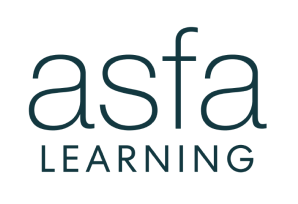24 August 2023
ASFA: Retirees continue to face retirement cost pressures
Australian retirees continue to face significant cost pressures on their household budgets as historically high consumer price inflation drives up the price of everyday items.
The Association of Superannuation Funds Australia (ASFA) finds the annual expenditure needed to reach ASFA’s comfortable retirement standard rose another 0.5 per cent in the June quarter to hit a record high of $70,806 per year for couples, and $50,207 for singles, taking the annual increase to 6.1 per cent.
This is just slightly higher than the 6.0 per cent increase in the general Consumer Price Index (CPI).
Retiree budgets have been under substantial pressure for nearly two years due to high costs of essential goods and services, said ASFA Deputy CEO, Glen McCrea.
“Price rises in the cost of food were significant in the June quarter. The price of bread increased more than 5 per cent and is up 14 per cent over the year.”
“The cost of vegetables was up almost 4 per cent over the three-month period, with the noticeably higher cost of potatoes due to a shortage linked to unfavourable growing conditions last year. This impacts on a range of products, including hot chips, potato crisps and frozen potato products.”
“Once again, putting dinner on the table became more expensive, with the cost of poultry, dairy, vegetables and potatoes up significantly,” added Glen McCrea.”
The ASFA comfortable standard includes the cost of everyday expenses such as health, communication, clothing and household goods and reflects community expectations as well as changing lifestyle expectations and spending habits.
ASFA considers the scheduled increase in the Super Guarantee (SG) to 12 per cent in 2025 to be critical to help future generations of Australian retirees to achieve a dignified lifestyle in their post-work years, as well as improve the sustainability of the Age Pension and take pressure off future federal Government budgets as the population ages.
Spending categories showing largest quarterly price increases:
- Insurance (+5.3%) rose across house, house contents and motor vehicle insurance. This was the strongest quarterly rise since 2000. This follows a 3.5% increase in the March quarter.
- Fruit and vegetables rose 2.4% in the quarter, due to cooler weather reducing supply of tomatoes and cucumbers, and further price rises for frozen vegetables.
- The cost of soft drinks was up 3.0%, and by 4.1% for ice cream.
- Takeaway food prices increased by 1.7 per cent in the June quarter.
- Furniture and furnishings (+4.2%) and Household textiles (+9.5%) rose due to prices returning from post-Christmas discounting in the previous quarter.
- There were minor falls in the cost of electricity and gas in the quarter reflecting developments in market price offers, but significant cost increases came into effect from 1 July onwards.
Details for the various updated budgets follow.
Table 1: Budgets for various households and living standards for those aged around 65 (June quarter 2023, national)

Table 2: Budgets for various households and living standards for those aged around 85 (June quarter 2023, national)

The figures in each case assume that the retiree/s own their own home and relate to expenditure by the household. This can be greater than household income after income tax where there is a drawdown on capital over the period of retirement. All calculations are weekly, unless otherwise stated. Annual figure is 52.2 times the weekly figure.
For further information, please contact:
ASFA Media team: 0451 949 300
About ASFA Retirement Standard
Since 2004 the ASFA Retirement Standard has served as a retirement companion for Australians, providing a reliable retirement savings guide by benchmarking the annual budget needed to fund either a comfortable or modest standard of living in the post-work years. It is updated quarterly to reflect inflation, reviewed regularly to reflect changes in lifestyle, and provides detailed budgets of what single people and couples would need to spend to support their chosen lifestyle.
More information
Costs and summary figures can be accessed via the ASFA website. Australians can find out more about superannuation on the independent Super Guru website.



